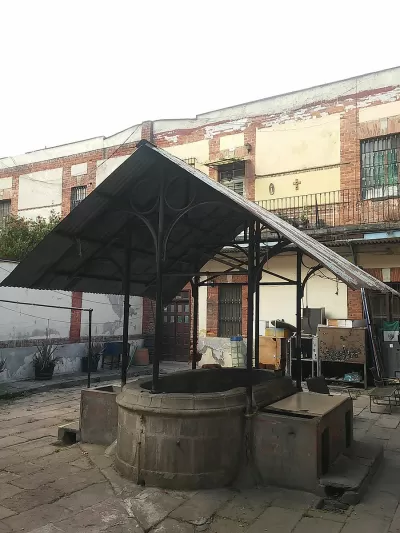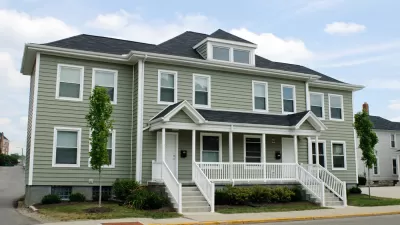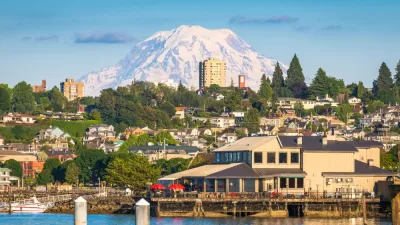An iconic multifamily housing form repurposes the former homes of Mexico's elite into communal housing for urban workers.

In an article series exploring iconic home designs around the world, Natalie Delgadillo describes an urban Mexican housing type known as a "vecindad." Although the word technically means "neighborhood," it has come to define a specific design: "a kind of tenement where individual apartments encircle a central patio, and residents often share facilities such as bathrooms and kitchens."
The vecindad, Delgadillo writes, is an appropriate symbol of the country's colonial past, having started life as an imposing home for aristocratic Spanish families before being subdivided into dwellings for the working class. "The history of these structures in Mexico City is rich and deep; they tell a story about the city’s development into a megalopolis, not to mention the country’s myriad — and sometimes seismic — economic and political shifts from the 17th century onward."
As rural Mexicans migrated to cities in search of work in the 19th century and the wealthy moved to the suburban periphery, the buildings were repurposed as multifamily rental units. They at first lacked private amenities like bathrooms or kitchens, though some have been added more recently. The central patio linked the residents for essential tasks, creating a "deeply communal way of life."
Delgadillo describes the complex and nuanced social relations created by the intimate nature of the vecindades and the intricate hierarchies developed among their inhabitants. According to the article, the vecindad gained a cultural cache that has left a powerful imprint on the Mexican imagination. But today's vecindades have fallen into disrepair, writes Delgadillo, damaged by earthquakes and decades of neglect from policymakers and planners who prioritized newer housing types. Now, despite some restoration efforts, the future of vecindades as a source of housing for low-income families is threatened as the buildings get converted to other uses or more expensive housing.
FULL STORY: How Mexico City’s Vecindades Became Homes for the Working Class

Planetizen Federal Action Tracker
A weekly monitor of how Trump’s orders and actions are impacting planners and planning in America.

Chicago’s Ghost Rails
Just beneath the surface of the modern city lie the remnants of its expansive early 20th-century streetcar system.

San Antonio and Austin are Fusing Into one Massive Megaregion
The region spanning the two central Texas cities is growing fast, posing challenges for local infrastructure and water supplies.

Since Zion's Shuttles Went Electric “The Smog is Gone”
Visitors to Zion National Park can enjoy the canyon via the nation’s first fully electric park shuttle system.

Trump Distributing DOT Safety Funds at 1/10 Rate of Biden
Funds for Safe Streets and other transportation safety and equity programs are being held up by administrative reviews and conflicts with the Trump administration’s priorities.

German Cities Subsidize Taxis for Women Amid Wave of Violence
Free or low-cost taxi rides can help women navigate cities more safely, but critics say the programs don't address the root causes of violence against women.
Urban Design for Planners 1: Software Tools
This six-course series explores essential urban design concepts using open source software and equips planners with the tools they need to participate fully in the urban design process.
Planning for Universal Design
Learn the tools for implementing Universal Design in planning regulations.
planning NEXT
Appalachian Highlands Housing Partners
Mpact (founded as Rail~Volution)
City of Camden Redevelopment Agency
City of Astoria
City of Portland
City of Laramie





























